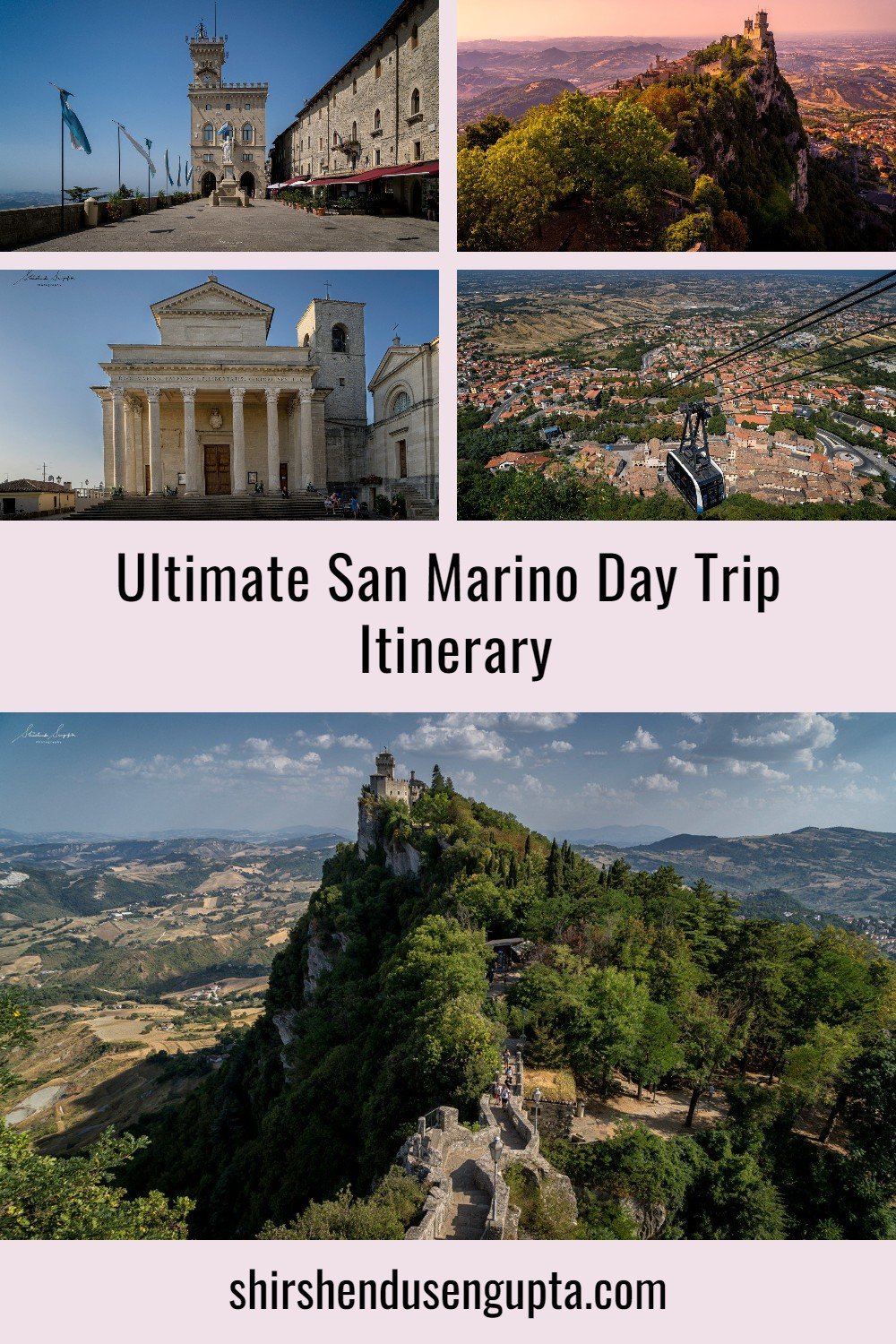Top 20 Things to See and Do in Athens and Attica | 20 Best Places to Visit in Athens and Attica | 20 Must See Tourist Attractions in Athens and Attica, Greece
Welcome to Attica
Attica is a historical region in east-central Greece comprising Athens, the capital of Greece, and its countryside, that has acted as the seat of Greek civilization for ages and held a very important position in Classical history. Geographically, it is a peninsula surrounded on three sides by the Aegean Sea, with the rest of the continent to the north. Although Athens and its suburbs occupy the majority of the area, it also features sparsely inhabited communities, particularly along the boundaries. Archaeological sites, highland villages, seaside towns, and numerous beaches can all be found in Attica.
According to Greek legend, Attica was ruled by four fighting Attic tribes who were brought together under the leadership of King Theseus. Attica became a major trading force thanks to its various ports including the modern port city of Piraeus and remained the capital of the Athenian city-state, which was Greece's most powerful city-state until the Peloponnesian War, which destabilized Greek society and set the stage for a series of conflicts and civil wars that eventually led to the Greeks succumbing to the Roman Empire.
The present administrative region of Attica is larger than the ancient region and includes several islands as well as a portion of the Peloponnese. It now attracts a wide range of people, from curious archaeologists to tourists who want to experience Greece.
About Athens
Located in the heart of the Attica region, Athens is not only Greece's capital, but also a major transportation hub for the Greek islands and popular mainland attractions. Athens is known across the world as the cradle of democracy and the Olympic games, among other things, and is regarded as Europe's historical capital which is mirrored in its cityscape - neoclassical buildings, large squares, statues, and scenic alleyways combine to create a magnificent ambiance that you simply must experience. Today I’m going to take you along with me on a ride across the top 20 things to see and do in this beautiful city and the surrounding region of Attica. Let the journey begin!
Top 20 Things to See and Do in Athens and Attica
1. Enter the ancient region of Athens via the Hadrian’s Arch
The Arch of Hadrian, also known as Hadrian's Gate in Greek, is a colossal entryway measuring 18 meters in height and 13 meters in width that resembles a Roman triumphal arch in certain ways. It ran from the heart of Athens, Greece, to a complex of structures on the city's eastern outskirts, which included the Temple of Olympian Zeus. It has been suggested that the arch was built in 131 or 132 AD to commemorate the adventus (coming) of the Roman Emperor Hadrian and to praise him for his many benefactions to the city.
The architrave, made of Pentelic marble, includes two inscriptions, however, it is unknown who commissioned it. "This is Athens, the city of Theseus," says one inscription facing the Acropolis and the old town (looking west). "This is the city of Hadrian, not Theseus," states the other inscription, which faces the sanctuary (Temple of Olympian Zeus) and an expansion of Athens built by Hadrian (facing east).
2. Get awestruck by the colossal architecture of the Temple of Olympian Zeus
The Olympieion, or Temple of Olympian Zeus, is a massive ruined temple dedicated to Zeus, king of the Olympian gods, located at the foot of the sacred rock of Acropolis. Construction began in the 6th century BC under the leadership of the Athenian tyrants, who planned to build the world's biggest temple, but it was not completed until the reign of the Roman Emperor Hadrian in the 2nd century AD, 638 years after the project began. During the Roman era, it was known as Greece's greatest temple, and it contained one of the world's largest cult sculptures.
The Temple of Olympian Zeus is built in the Corinthian style on a massive platform that measures 110 meters in length and 44 meters in width. Only 15 of the original 104 Pentelic marble columns, each 17 meters (56 feet) high, remain standing today to provide an idea of the temple's immense scale. There was a massive gold and ivory statue of Zeus inside the temple that no longer exists. To get an idea of the size of the temple, compare its height with that of the ant-like humans walking around it in the first image.
3. Climb the Acropolis
The UNESCO World Heritage Acropolis of Athens is an ancient citadel perched atop a rocky outcrop above the city of Athens housing the ruins of the biggest architectural and artistic complex bequeathed by Greek antiquity to the world. The word acropolis comes from the Greek words ‘akron’ meaning ‘highest point,’ and ‘polis’ meaning ‘city.’
The Acropolis of Athens was also known as Cecropia in ancient times after Cecrops, the first king of Athens who was thought to be half-man, half-snake. Following its triumph over the Persians and the foundation of democracy in the second part of the fifth century BC, Athens rose to prominence among the ancient world's city-states. In the centuries that followed, as intellect and art grew, an exceptional collection of artists carried out the ambitious ideas of Pericles (arguably the most prominent and influential Greek statesman, orator, and general of Athens during the Golden Age, specifically the time between the Persian and Peloponnesian wars) and, with the help of the sculptor Pheidias, converted the rocky hill into a one-of-a-kind monument to thought and arts. The Parthenon, built by Ictinus, the Erechtheon and the Propylaea, the colossal entrance to the Acropolis, planned by Mnesicles, and the tiny temple of Athena Nike were all built during this time. At the time of the Venetian siege of Athens in 1687 during the Morean War, gunpowder stored in the Parthenon by the Ottomans was hit by a projectile and exploded, severely damaging the Parthenon and other buildings.
The Acropolis is a 156-meter-high (512-foot) hill with no lift. This implies you'll have to walk the entire way up. But when you take your time at the many monuments you pass, it usually isn't a problem. An estimated 2 million people visit the Acropolis each year, all of whom hike up the slope.
Map of Acropolis, image source: theculturemap.com/athens-guide-ancient-momuments-history-lovers/acropolis-athens-map-travel-guide
4. Walk past the Theatre of Dionysus while climbing the Acropolis
The Theatre of Dionysus is considered the first example of Greek theaters and the origin of Greek drama. It is the world's first theater, carved inside a natural hollow on the southern slopes of the Acropolis. Dionysus, the deity of wine and pleasure, whose festivals were the driving force behind the birth of Greek drama, was honored in this ancient theater. The theater, which was most likely built in the late sixth century, has been rebuilt numerous times since then.
The theater was first utilized as a regular setting for theatrical performances of plays written by great tragic authors including Aeschylus, Euripides, and Sophocles throughout the 5th century. The theater was a venue where the god Dionysus was honored, and the plays were staged as part of the festivities. In reality, a colossal statue of the god had been put in the front row so that he could see the plays and sacrifices performed in his honor.
5. Take a stroll around the Odeon of Herodes Atticus on your way to the Acropolis
The Odeon of Herodes Atticus is a stone theatre constructed on the Acropolis' southwest slope. It was built in remembrance of his wife, Aspasia Annia Regilla, by the Athenian magnate Herodes Tiberius Claudius Atticus, a teacher and philosopher who inherited a fortune from his father, in 161 AD. It was once a steeply sloping amphitheater with a three-story stone front wall and a wooden roof made of costly cedar of Lebanon timber. With a seating capacity of 5,000, it was used as a venue for music concerts. The theatre now hosts concerts as part of the Athens Festival. On the approach to the Acropolis, a morning stroll through the Odeon can be enjoyed for its beauty and charm.
6. Enter the Acropolis through the Propylaea
The Propylaea of Athens was intended as a monumental gateway to the plateau of the acropolis and the great temple to Athena, the Parthenon, as part of Pericles' enormous rebuilding program for Athens in 437 BC. The project began as the Parthenon was nearing completion, and it was overseen by architect Mnesicles (or Mnesikles). Following the start of the Peloponnesian War in 431 BC, work was halted, but it was never restarted. Fortunately, the majority of Mnesicles' vision had been realized.
7. Visit the Pandroseion, Erectheum, Porch of the Caryatids, and Old Temple of Athena on the Acropolis
The Pandroseion (pillared structure on the left in the first image below)
The Pandroseion was a sanctuary dedicated to Pandrosus. Pandrosus was one of Cecrops' daughters, the mythological serpent-man who was purportedly the first Athenian ruler. The gods challenged each other for towns to be honored in during his rule. Both Athena and Poseidon desired Athens. Poseidon arrived in Attica and struck the rock with his trident, causing seawater to flow from the Acropolis, while Athena planted the first olive tree on its slopes. Zeus appointed Cecrops as a mediator between them, and he picked Athena since her gift was more valuable to the people.
Erechtheum (the structure protruding out housing the maiden shaped pillars in the first image below)
The Erechtheion, also known as the Erechtheum, is an ancient Greek temple on the north side of Athens' Acropolis. This temple was dedicated to (and named for) Erechtheus, one of Athens' legendary monarchs, who was eventually divinized and occasionally equated with Poseidon himself. The temple was claimed to have been built on the site where Poseidon had struck the rock to make seawater flow in his struggle with Athena for control over Attica during the reign of King Cecrops, and Athena had planted an olive tree to win the contest.
Porch of the Caryatids (the maiden shaped pillars in the first image below)
The famed "Porch of the Caryatids (Porch of the Maidens)" sits to the south of Erectheum, with six draped female figurines (caryatids) serving as supporting columns.
Old Temple of Athena (the ruins in front in the first image below)
This is where many temples to Athena Polias (protector of the city) were built in succession, taking advantage of the leveling of the ground that had previously been done for a Mycenaean palace. The most recent of these temples was built in 525 BC. A wooden statue of Athena (Xoanon) was claimed to have fallen from the sky and was housed in the temple. In 480 BC, the Persians destroyed and burned down the temple and the statue.
8. Marvel at the Parthenon on Acropolis
The Parthenon is the most well-known surviving structure from Ancient Greece, as well as one of the most well-known structures in the world. The Parthenon, located at the pinnacle of the Acropolis, is an ancient temple dedicated to Athena, the Virgin Goddess ("Parthenos" in Greek) and protector of Athens.
Pericles ordered its construction, which took ten years, from 447 to 438 BC, on the site of two earlier temples to Athena Parthenos, the second of which was still unfinished when it was destroyed by the Persians in 480 BC.
Ictinus and Callicrates were the architects, and they worked under the direction of Phidias, Pericles' friend and art councelor, who sculpted the chryselephantine (meaning "plated with gold ("chrusos" in Greek) and ivory ("elephas, elephantos" in Greek)") statue of Athena that was inside the temple. Forty talents of pure gold had been used for the plating of the statue that could be removed in case of financial need.
9. Imagine the Chalkotheke from its ruins on the Acropolis
The Chalkotheke, whose name means "case for bronze (chalcos) vessels" in Greek, served as a repository for bronze artifacts presented to Athena.
A reconstruction of the Chalkotheke, image source: ancientathens3d.com/classical-acropolis
10. Visit the Temple of Hephaestus (Hephaestion) inside the Ancient Agora of Athens
The Athens Agora is a modern archaeological site beneath the northwest slope of the Acropolis. The term "agora" refers to a gathering area for people or a marketplace. Almost every ancient and modern city has a space for an agora, and the Agora of Athens, being in the heart of the city, has been in use for over 5000 years as an assembly, commerce, or residential area. As a result, the area has gone through numerous cycles of construction, destruction, and restoration.
The Temple of Hephaistos, also known as the Theseion or Hephaisteion, was built in the fifth century BC and overlooks the Ancient Agora from its elevated position on the hill of Agoraios Kolonos. Hephaistos (the Greek patron god of metalworking and workmanship) and Athena were honored in the temple. The temple comprises of thirty-four Doric columns that support a mostly complete roof, similar in design but smaller than the contemporary Parthenon. Because of its conversion to a church in the seventh century, the Hephaisteion is Greece's best surviving temple. The temple was named a national monument in 1834 and served as an archaeological museum for a while.
Hephaestus was the son of Zeus and Hera, according to Homer's epics, the Iliad and the Odyssey. Hera threw Hephaestus out of Olympus when he was born because he was handicapped. He landed in the Greek island of Lemnos, where he established himself as a skilled artisan. Later, he was accepted back to Olympus and became the gods' craftsman, producing magnificent armors, shields, and weapons.
11. Visit the Church of Holy Apostles inside the Ancient Agora of Athens
The Church of the Holy Apostles, which dates from the middle of the 10th century, is located on the western side of the Ancient Agora of Athens. This church is particularly notable because, except for the Temple of Hephaestus, it is the only monument in the Agora to have survived entirely since its foundation.
The ashlar brickwork and ornate Kufic (an Arabic writing style) inscriptions on the outside are significant. The church contains a dome supported on four columns, as well as semicircular conches in the apse and transepts, which are typical of the Byzantine style. Original frescoes portray Christ Pantocrator (Ruler of All), John the Baptist, lovely small cherubim, and archangels on the dome's interior. The original iconostasis (wall of icons and religious paintings) from the 11th century has also been carefully conserved.
12. Visit the Stoa of Attalos (Archaeological Museum) inside the Ancient Agora of Athens
King Attalus II of Pergamon constructed the Stoa of Attalos (or Attalus) around 150 BC. The two-story structure, which measured 116.5 meters in length and 19.5 meters in width (382 x 64 feet), served as a commercial mall with each floor housing 21 shops. Customers could relax in the shade of the covered colonnade in front of the shops. The philosophical school of ‘Stoicism’ named after the Greek word 'Stoa,' started here as from this porch, Zeno spoke and trained his followers.
The Heruli, a Germanic tribe, demolished the stoa in 267 AD. The American School of Archaeology restored the stoa on the foundations of the ancient edifice from 1953 to 1956. Today, it houses the Agora Museum, which displays artifacts discovered on the Ancient Agora's archaeological site.
13. See the Hellenic Parliament at Syntagma Square
The Hellenic Parliament is Greece's parliament, and it is housed at the Old Royal Palace in Athens, overlooking Syntagma Square. The Old Royal Palace, which was the house of the first king of Greece, Otto, was built between 1836 and 1842. National artifacts such as the first Greek Constitution, a collection of important paintings, and a big library can be found in the Parliament.
14. Watch the Change of Guards in front of the ‘Tomb of the Unknown Soldier’ at Syntagma Square
The ‘Tomb of the Unknown Soldier’ is a monument dedicated to the services of an unknown soldier and to the common memories of all soldiers lost in wars. It is located in Syntagma Square, in front of the Hellenic Parliament. Every hour, the Presidential Guard performs a changing of the guard ceremony in front of the ‘Tomb of the Unknown Soldier.’ The Guards called Evzones are elite troops from the Greek Army's light infantry and mountain regiments who also defend the Palace and are picked for their height and strength.
15. Visit the National Gardens and the Zappeion
The National Garden is a huge green park and home to the Zappeion, located close to the Greek parliament. If you've had your fill of the sun during your sightseeing day, this is a peaceful, shady spot to unwind and cool off. Trails winding through thick trees provide a welcome respite from the hectic streets.
The Zappeion Hall, on the border of the garden, can be entered for a look inside if it is not in use. It was erected in the 1870s and is used for both official and private gatherings and festivities. The main entrance is flanked by columns and features an amazing spherical open-air hall.
16. Visit the Panathenaic Stadium
The Panathenaic Stadium, known among locals as the Kallimarmaro (which means "beautifully marbled"), is a multi-purpose stadium in Athens that hosts a variety of events and athletics. In 1896, the stadium hosted the first modern Olympic Games. The Panathenaic Stadium, reconstructed from the ruins of an ancient Greek stadium, is the world's only stadium built entirely from marbles and one of the world's oldest. The athletic part of the Panathenaic Games, held in honor of the goddess Athena, was held in this stadium in ancient times. It featured hardwood benches in classical times. The archon Lycurgus rebuilt it in marble in 329 BC, and Herodes Atticus extended and refurbished it around 140 AD, giving it a seating capacity of 50,000.
17. Climb to the top of Mount Lycabettus (Lycavittos)
Mount Lycabettus (Lycavittos) is a 278 meters high hill covered with forests in the center of Athens that is popular with locals for trekking and resting in neighborhood cafes and restaurants. In ancient times, the hill was covered in rich greenery, and a temple dedicated to Zeus stood atop it. Lycabettus Hill had no trees at the time Athens was liberated from Turkish rule. The reforestation project began in 1880 and ended in 1915.
According to legend, goddess Athena wanted her Acropolis temple to be closer to heaven. She traveled to Mount Penteli one stormy night and took a large rock to place on top of the existing rock of Acropolis. Two black birds contacted her as she was transporting the rock, bringing her unpleasant news about something she needed to deal with right away. The rock fell in the heart of Athens due to her fury and haste which is today known as Mount Lycabettus.
18. Visit the Port of Piraeus
Piraeus is a port city in Greece's Attica region. It is located in the Athens metropolitan region, 12 kilometers southwest of Athens on the Saronic Gulf's east shore.
19. Relax at Lake Vouliagmeni
A remarkable strange geophysical structure that gave the suburb its contemporary name - Lake Vouliagmeni ("Sunken Lake"), a small brackish water lake nourished by subsurface currents pouring through the mass of Mount Hymettus, can be located immediately to the south of town and quite close to the sea. It was formerly a massive cavern that was destroyed by an earthquake, most likely in the early Middle Ages. From a distance, the silhouette of the fallen cavern roof can be seen. The lake continues deep below the mountain in an underwater cave that has never been fully investigated, as its end appears to be impossible to find even with sonar detection. Many underwater excursions have been undertaken in order to map it, with a few amateur divers drowning in the process. The lake is 40 meters above sea level and has a steady temperature of 24 degrees celsius all year owing to which it serves as a year-round spa.
20. Visit Cape Sounion and the Temple of Poseidon
Cape Sounion is a promontory near the southernmost tip of Greece's Attica peninsula, approximately 69 kilometers (43 miles) southeast of Athens. The ruins of an ancient Greek temple dedicated to Poseidon, the god of the sea in Greek mythology, can be found at Cape Sounion. The ruins are located on a rocky outcropping with the sea on three sides.
Poseidon, the god of the sea, held a high position in the divine hierarchy in a maritime country like Greece. In terms of strength, Poseidon was second only to Zeus (Jupiter), the greatest god. All seamen feared his inexorable anger, which expressed itself in the shape of storms. Storms regularly resulted in shipwrecks and drownings in an age before mechanical power. As a result, the temple at Cape Sounion, Attica, was a place where seamen, as well as entire towns or states, could worship Poseidon by sacrificing animals or leaving presents.
The temple of Poseidon was built over the ruins of a temple from the Archaic Period about 444–440 BC. It is perched above the waves at about 60 meters (200 ft) above sea level. The temple was built in a classic hexastyle design, having a six-columned front portico. Only a few columns of the Sounion temple remain today, but it would have resembled the contemporary and well-preserved Temple of Hephaestus in Athens' Ancient Agora, which was possibly created by the same architect.
The ruins bear the deeply engraved name of English Romantic poet Lord Byron who once wrote in his satirical epic poem Don Juan, Canto the Third "The Isles of Greece" - “Place me on Sunium's marbled steep, Where nothing, save the waves and I, May hear our mutual murmurs sweep...”
Visiting Athens and Attica
Best Time to Visit: Spring (April through June) and fall (September through October) are the ideal seasons to visit Athens and the surrounding Attica region because of the lovely weather and low crowds. The pleasant weather throughout these months makes them perfect for outdoor activities and historical site exploration. We traveled during May.
Number of Days to Stay: We advise you to spend four to five days in Athens and its surroundings to properly take advantage of the cultural, historical, and gastronomic offerings. This lets you take your time discovering famous sites, galleries, and residential areas.
Best Place to Stay: One of Athens' most well-liked and picturesque neighborhoods is the Plaka district. It has a charming atmosphere with small lanes, classic tavernas, and a wide range of businesses. It is close to the Acropolis. Other excellent choices include Syntagma Square and Monastiraki, which offer quick access to popular sights and public transit. We stayed near Syntagma Square.
Best Way to Arrive: The best way to get to Athens is by plane, and Eleftherios Venizelos International Airport is the primary airport. There are direct flights accessible from global major cities. You may take a cab, subway, or airport shuttle from the airport to go to the city center. When we traveled to Greece, we first arrived at Santorini by flight from the Netherlands. Thereafter we spent four days in Santorini and explored the island. Then we flew from Santorini to Athens, explored the Athens and Attica region for another four days, and then flew back to the Netherlands from Athens.
To know more about the best places to visit in Santorini, please read our article Top 19 Things to See and Do in Santorini | 19 Best Places to Visit in Santorini | 19 Must See Tourist Attractions in Santorini, Greece.
Best Local Mode of Conveyance: The metro, buses, and trams in Athens offer an economical and effective public transportation system. The metro is especially practical for traveling throughout the city and to important locations. In Athens, ridesharing services are accessible as well as taxis. Because the city center and its historic attractions are tiny, walking is an excellent method to explore them. Additionally, think about purchasing the Athens City Pass, which is an affordable and practical choice for travelers as it grants free admission to numerous museums and archaeological sites in addition to access to public transportation.
To explore the Attica region we recommend renting a car or taking a day cab/taxi. We explored all of Attica in a single day at 150 Euros with our amazing driver and guide Kostas Casillas. He reached our hotel 1 hour before time (he said we gave him a full-day job which he should respect), drove us around, told Greek folklore that his grandmother told him when he was a kid and other stories from his childhood, helped change my son’s diapers, take our pictures, and give some life advises that I still remember and try to follow. So to me, if you get someone like him, this is the best option.
Epilogue
So that brings us to the end of our journey across the top 20 things to see and do in Athens and Attica. Please let us know in the comments below if you enjoyed reading this article. And until we meet next time, I wish you merry traveling and happy shooting!
Pin the article
Bookmark the article for reading later!
Want to license/buy photos in the article?
License photos for commercial/editorial use or buy photo prints!
Want us to write an article for you?
Articles for magazines, newspapers, and websites!
Watch our Videos
Check out our videos on our Youtube Channel!
Join the Newsletter
Get updates on our latest articles!
We respect your privacy. Read our policy here.































